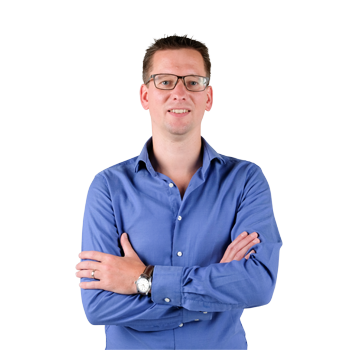The industry in the Port of Rotterdam generates a huge amount of surplus heat while carrying out its primary production processes. In the past, this heat went largely unused, until a few years ago. In the autumn of 2013, Warmtebedrijf Rotterdam (WBR, Rotterdam Heating Company) put into operation an entire new network of underground pipelines. The 26-kilometer heating transport network brings the surplus heat from the port’s industries to households in the city and other buildings such as the Maasstad Hospital. An environmentally- and economically-friendly form of heat supply. Even more so once the use of production resources has been optimized by CQM.
The new heating transport network in Rotterdam South also links up with the existing network in Rotterdam North. Thanks to the cheap surplus heat from the port, originating from the waste processing company AVR, the use of more expensive gas-fired heating installations in Rotterdam North can be significantly reduced. This has not only green benefits, but also clear cost savings. Yet these benefits are highly dependent on the efficiency with which the total heating transfer system functions. And that system is extremely complex.
As well as the underground pipelines, there are several main offtake points, where the surplus heat is transferred to the energy distributor that transports it to the end-user. There are also above-ground booster stations that ensure there is sufficient pressure in the heat transfer system at all times to transport the heat over the entire route. And then there’s the heating hub on the street Brielselaan, including a heat buffer of more than 5,000m3 and two heat exchangers for the connection to the existing heating network.
Optimization
For WBR, the key challenge is achieving optimal 'dispatching': the efficient use of production resources within the heat network, so the right amount of heat is removed at the right time and stored in the buffer. Only then can you maximize the economic and environmental profitability. WBR asked CQM to develop optimization software to support dispatching, which occurs daily, with a tight deadline: the tool had to be ready for the first delivery of industrial surplus heat.
WBR and CQM worked intensively together to create an optimization model in AIMMS, user-friendly optimization software. The complexity of the heating network and means of production meant the calculation times of the first models were too long. But with some smart modeling and choices made in detail levels and time horizons, a model was finally created with which WBR are very happy and that they now use every day.
Expansions
"We now have an excellent, user-friendly model for optimal dispatching in the current set-up," says manager operations at Warmtebedrijf Rotterdam, Andrew Mol. "But the model also lets us look at the impact of any future expansions to the network: What’s the best way to expand the network? Which new heating suppliers and buyers are worth considering? So basically, the model gives us both optimal control over current events and insights for future decisions. A job well done by CQM."
Would you like optimal control over current events and insights into the future?
CQM can help. Just contact our consultant Jacob Jan Paulus.


